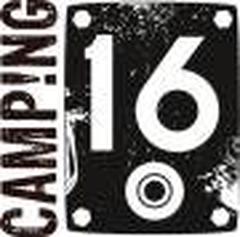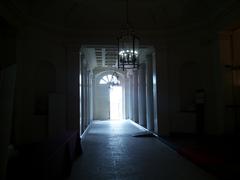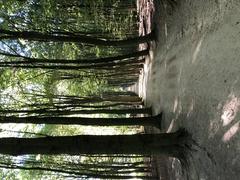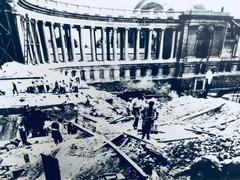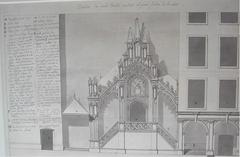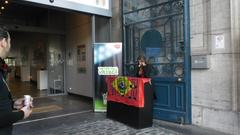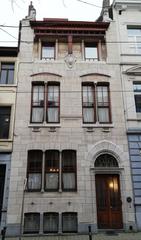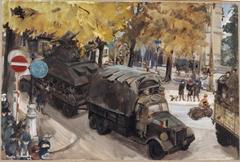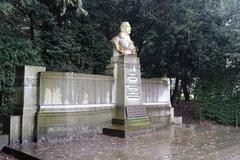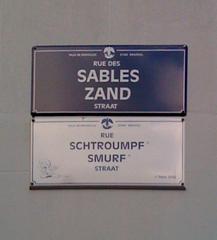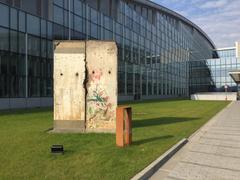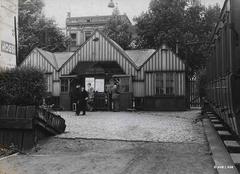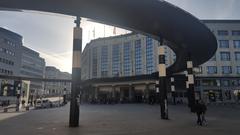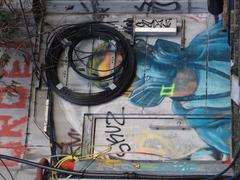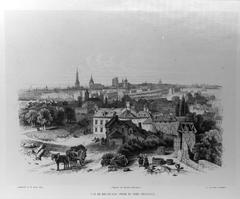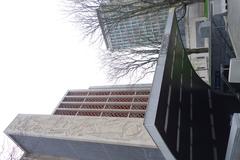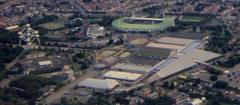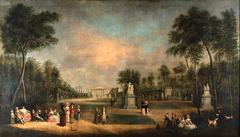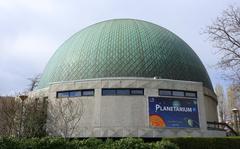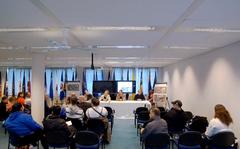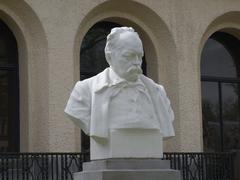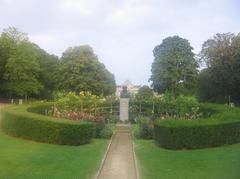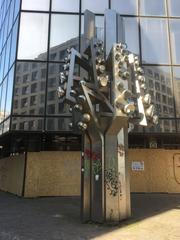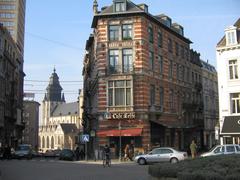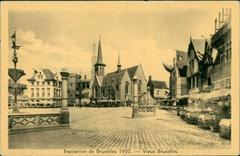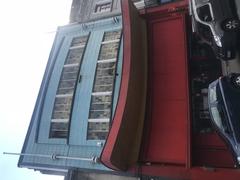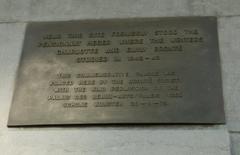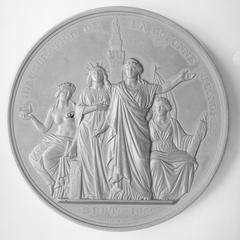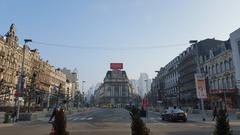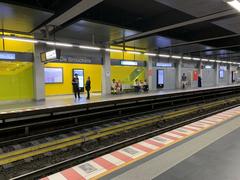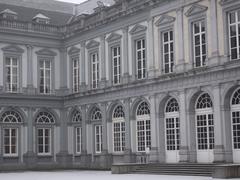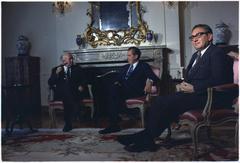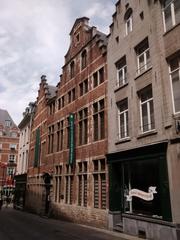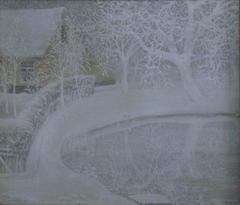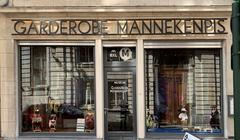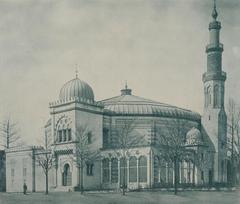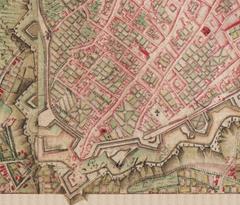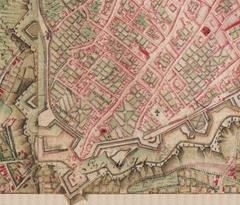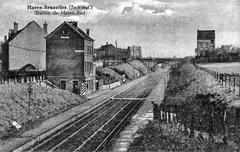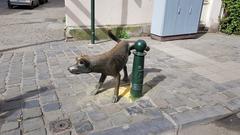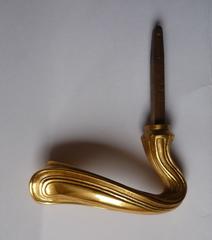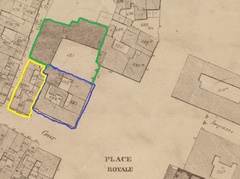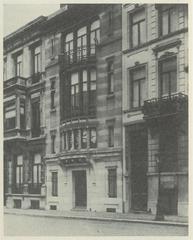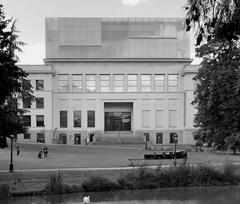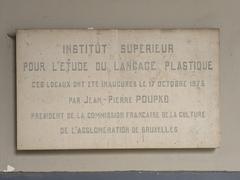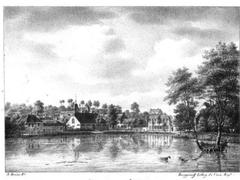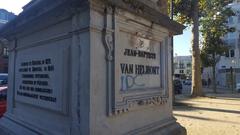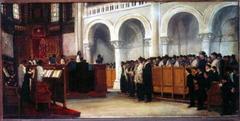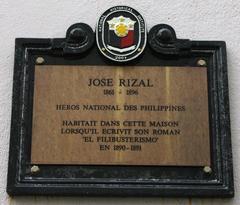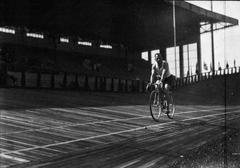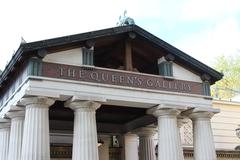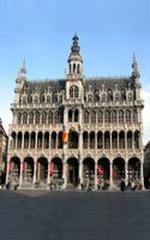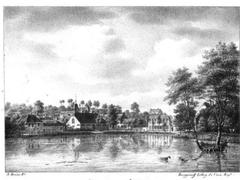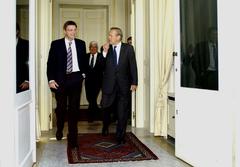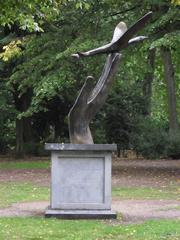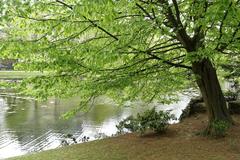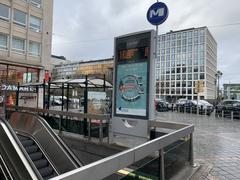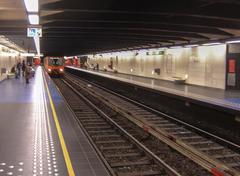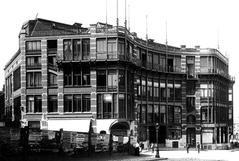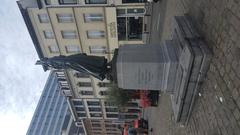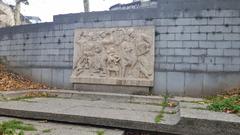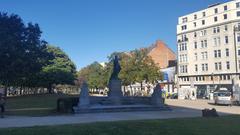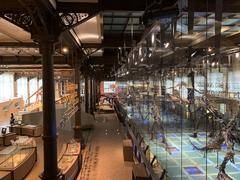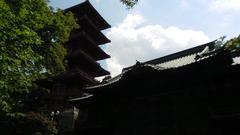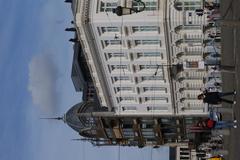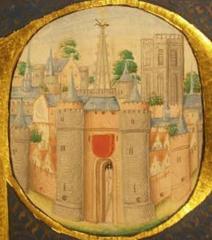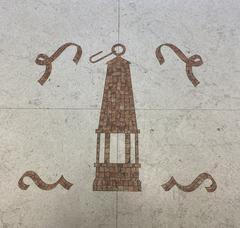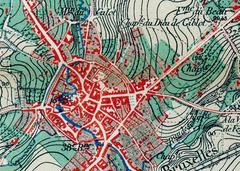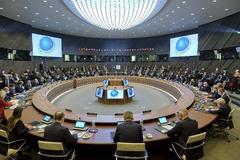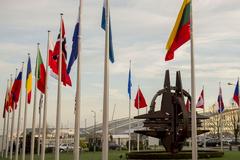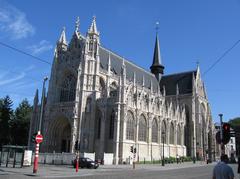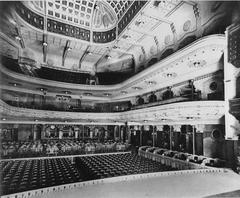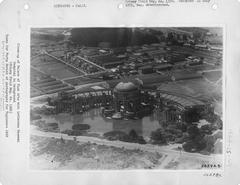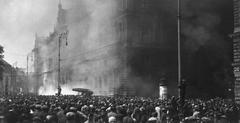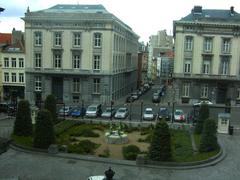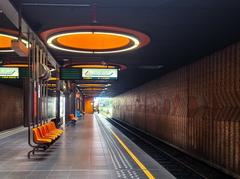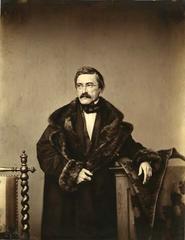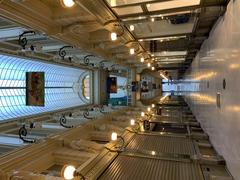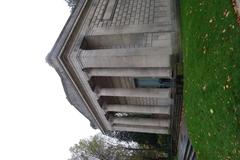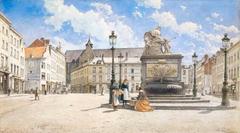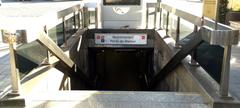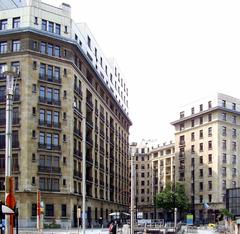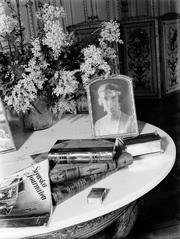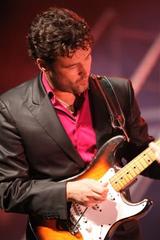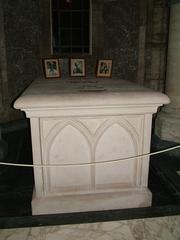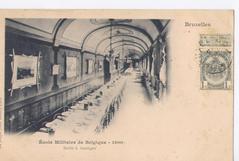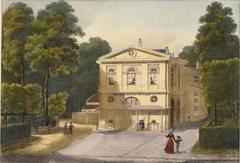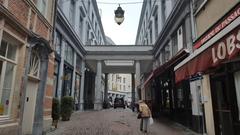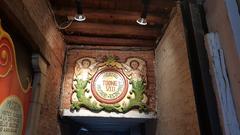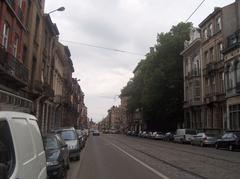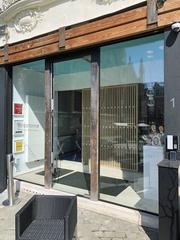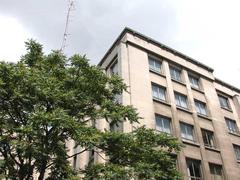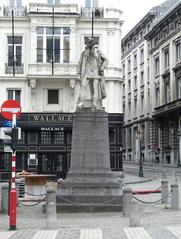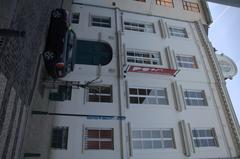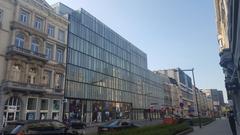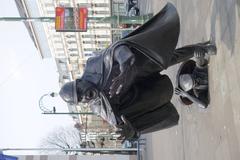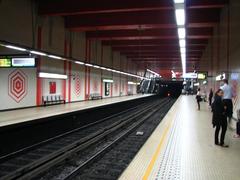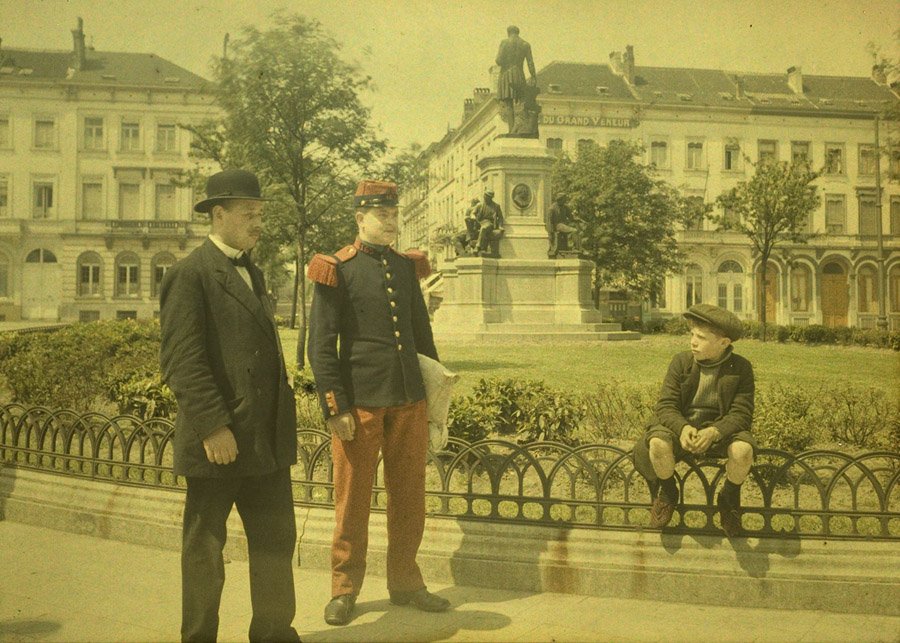
Luxembourg Square Visiting Hours and Travel Guide in Brussels
Date: 18/07/2024
Introduction
Table of Contents
- Luxembourg Square - Exploring the Heart of Brussels’ History and Modern Charm
- Early Days - From Monastery Gardens to Public Space
- The Birth of a Nation and a Square’s Transformation
- A Green Oasis Takes Shape
- From World Wars to European Union Hub
- Luxembourg Square Today - A Blend of Past and Present
- Visitor Information
- Travel Tips
- Special Events and Guided Tours
- Photographic Spots
- FAQ Section
- Exploring Luxembourg Square - Visiting Hours, Tickets, and Top Attractions in Brussels
- The Majestic Seat of Power - European Parliament
- A Palace Fit for Royalty - Palais de la Nation
- A Glimpse into History - The House of European History
- Artistic Expression - Musée Wiertz
- A Moment of Reflection - Monument aux Morts de la Guerre 1940-1945
- Architectural Gems - Surrounding Buildings
- Green Oasis - The Square’s Gardens
- A Taste of Local Life - Market Days
- Beyond the Square - Exploring the Neighborhood
- Special Events and Guided Tours
- Photographic Spots
- Travel Tips
- FAQ Section
- Exploring Luxembourg Square - History, Visitor Tips, and Cultural Significance
Luxembourg Square - Exploring the Heart of Brussels’ History and Modern Charm
Luxembourg Square, more affectionately known as Place du Luxembourg by locals, hasn’t always been the bustling hub it is today. Its history is a fascinating journey through different eras, marked by significant transformations that have shaped its present character.
Early Days - From Monastery Gardens to Public Space
The square’s story begins in the 14th century, closely intertwined with the presence of a Franciscan monastery. The monks cultivated sprawling gardens on the land, providing a peaceful retreat from the city’s bustle. However, this tranquility was short-lived. In the late 18th century, the French Revolution swept across Europe, leaving its mark on Brussels. The monastery, like many religious institutions, faced suppression, and its gardens were seized.
This event marked a turning point for the area. In 1782, the former monastic grounds were redesigned into a public space known as Place Guillaume. This square, smaller than the Luxembourg Square we know today, served as a marketplace and a venue for public gatherings.
The Birth of a Nation and a Square’s Transformation
The year 1830 was pivotal for Belgium. The country declared its independence from the Netherlands, and Brussels became the capital of this newly formed nation. This significant event ushered in a period of growth and development, impacting the city’s urban landscape, including Place Guillaume.
With the newly established parliament building nearby, the square gained prominence. It was renamed Place du Luxembourg in honor of the neighboring country that played a crucial role in securing Belgian independence. This period also saw the construction of the impressive Palais de la Nation, further solidifying the square’s importance in the city’s political and social fabric.
A Green Oasis Takes Shape
The mid-19th century witnessed a conscious effort to enhance the square’s aesthetic appeal. Inspired by the French garden design principles, architect Tilman-François Suys spearheaded a major redesign. This transformation, completed in 1855, gave birth to the Luxembourg Square we recognize today.
Suys’ design introduced elegant symmetry, characterized by geometrically arranged flowerbeds, manicured lawns, and tree-lined pathways. The centerpiece of this verdant oasis became the imposing equestrian statue of Leopold II, a controversial figure in Belgian history, erected in 1869.
From World Wars to European Union Hub
The 20th century brought its share of turmoil. During both World Wars, Luxembourg Square, like the rest of Brussels, faced occupation and witnessed the scars of conflict. However, it also became a symbol of resilience, a place where people gathered seeking solace and connection amidst uncertainty.
The latter half of the century saw the rise of Brussels as a significant center for international diplomacy with the establishment of the European Economic Community (EEC), later evolving into the European Union (EU). This development significantly impacted Luxembourg Square.
The influx of European institutions and their staff transformed the neighborhood. The square, strategically located near the European Parliament, became a popular meeting point for politicians, officials, lobbyists, and visitors. This blend of history, politics, and everyday life gives Luxembourg Square its unique and dynamic atmosphere.
Luxembourg Square Today - A Blend of Past and Present
Today, Luxembourg Square stands as a testament to Brussels’ rich history and its evolving identity. The square seamlessly blends its historical significance with its modern-day role. It’s a place where:
- Tourists relax amidst the beauty of its gardens, admiring the architectural grandeur of surrounding buildings.
- Locals enjoy their morning coffee, meet friends, or simply soak up the sun on a bench.
- Politicians and officials engage in discussions that shape the future of Europe.
Visitor Information
Visiting Hours - Luxembourg Square is open 24/7, making it accessible for visitors at any time of the day.
Ticket Prices - There is no entry fee to visit Luxembourg Square. It’s a public space open to everyone.
Best Times to Visit - Spring and summer are the best times to visit, as the gardens are in full bloom and the weather is pleasant.
Travel Tips
Nearby Public Transportation - The square is well-connected by public transport. The closest metro station is Trône, and several bus lines also serve the area.
Recommended Nearby Attractions - Consider visiting the European Parliament, Parc Leopold, and the Royal Palace of Brussels, all within walking distance.
Special Events and Guided Tours
Luxembourg Square hosts various events throughout the year, including public demonstrations, cultural festivals, and open-air concerts. Guided tours are available, providing insights into the square’s history and its significance in European politics.
Photographic Spots
For photography enthusiasts, the best spots include the equestrian statue of Leopold II, the beautifully landscaped gardens, and the architectural details of the surrounding buildings.
FAQ Section
Q - What are the visiting hours for Luxembourg Square?
A - Luxembourg Square is open 24 hours a day, 7 days a week.
Q - Is there an entry fee to visit Luxembourg Square?
A - No, Luxembourg Square is a public space and free to visit.
Q - What is the best time to visit Luxembourg Square?
A - Spring and summer are ideal times to visit, as the gardens are in full bloom.
Q - Are there guided tours available?
A - Yes, guided tours are available and provide valuable insights into the square’s history and significance.
Exploring Luxembourg Square - Visiting Hours, Tickets, and Top Attractions in Brussels
Luxembourg Square, or Place du Luxembourg as it is known locally, isn’t just a pretty park; it’s surrounded by notable buildings and monuments that add to its historical and cultural significance. In this guide, we’ll explore the top attractions, visiting hours, ticket information, and more to help you make the most of your visit to this iconic location in Brussels.
The Majestic Seat of Power - European Parliament
Location - East side of Luxembourg Square
Visiting Hours - Monday to Thursday from 9:00 AM to 5:00 PM, Friday from 9:00 AM to 1:00 PM
Tickets - Free, but advance booking required for guided tours (book here)
Dominating the east side of the square is the impressive complex of the European Parliament. While the main parliament building is in Strasbourg, France, this Brussels complex houses the Parliament’s secretariat and is the venue for many important political meetings and sessions. The modern architecture, a stark contrast to the square’s historical buildings, represents the forward-thinking nature of the European Union. Visitors can take guided tours to learn about the EU’s workings and even observe parliamentary sessions.
A Palace Fit for Royalty - Palais de la Nation
Location - Rue de la Loi, just south of Luxembourg Square
Visiting Hours - Monday to Friday from 9:00 AM to 4:00 PM
Tickets - Free entry, guided tours available (book here)
Just south of Luxembourg Square, a short walk down Rue de la Loi, stands the Palais de la Nation. This grand palace, built in the late 18th century, serves as the seat of the Belgian Federal Parliament. Its neoclassical facade and imposing size make it a significant landmark in Brussels. While not directly on the square, its proximity makes it a natural extension of the Luxembourg Square experience.
A Glimpse into History - The House of European History
Location - Close to European Parliament
Visiting Hours - Tuesday to Friday from 9:00 AM to 6:00 PM, weekends from 10:00 AM to 6:00 PM
Tickets - Free (more information)
A stone’s throw from the European Parliament is the House of European History. This museum, housed in a renovated 1930s building, offers a fascinating journey through the history of Europe, from its ancient roots to the present day. It’s a great place to delve deeper into the continent’s complex past and understand the events that shaped the European Union.
Artistic Expression - Musée Wiertz
Location - Just south of the square
Visiting Hours - Tuesday to Friday from 10:00 AM to 12:00 PM and 1:00 PM to 5:00 PM
Tickets - Free (more information)
For art enthusiasts, a visit to the Musée Wiertz is a must. This museum showcases the works of the 19th-century Belgian Romantic painter Antoine Wiertz. The museum is housed in the artist’s former studio and residence, offering a unique glimpse into his life and artistic process. Wiertz’s paintings, known for their dramatic themes and large scale, provide a fascinating insight into the Romantic art movement.
A Moment of Reflection - Monument aux Morts de la Guerre 1940-1945
Location - Within Luxembourg Square
Within the square itself, visitors will find the Monument aux Morts de la Guerre 1940-1945, a poignant reminder of the Second World War. This monument, inaugurated in 1951, commemorates the Belgian soldiers and civilians who lost their lives during the conflict. It serves as a place of remembrance and reflection on the sacrifices made during wartime.
Architectural Gems - Surrounding Buildings
Beyond the prominent landmarks, the buildings surrounding Luxembourg Square contribute to its charm and character. Many of these structures date back to the 19th century and showcase beautiful examples of neoclassical and eclectic architecture. The ornate facades, intricate details, and vibrant colors create a picturesque backdrop for a stroll around the square.
Green Oasis - The Square’s Gardens
The square itself is a beautiful green space, offering a welcome respite from the bustling city. The meticulously maintained gardens, with their colorful flowerbeds, manicured lawns, and shaded walkways, provide a tranquil setting for relaxation and recreation. Visitors can enjoy a picnic on the grass, read a book on a bench, or simply soak up the peaceful atmosphere.
A Taste of Local Life - Market Days
Market Days - Tuesdays and Thursdays
Twice a week, Luxembourg Square transforms into a bustling market. On Tuesdays and Thursdays, local vendors set up shop, offering a wide array of goods, including fresh produce, flowers, clothing, and souvenirs. It’s a great opportunity to experience the local culture, interact with residents, and perhaps pick up a unique souvenir.
Beyond the Square - Exploring the Neighborhood
The area surrounding Luxembourg Square is worth exploring in its own right. The neighborhood, known as the European Quarter, is home to numerous restaurants, cafes, and bars, offering a diverse culinary experience. Visitors can find everything from traditional Belgian cuisine to international flavors. The area also boasts a vibrant nightlife, with numerous pubs and bars catering to a diverse crowd.
Special Events and Guided Tours
Luxembourg Square often hosts special events, including cultural festivals, outdoor concerts, and public gatherings. Guided tours are available and can provide a more in-depth understanding of the square’s history and significance. Check the local tourism office for schedules and availability.
Photographic Spots
For photography enthusiasts, Luxembourg Square offers numerous picturesque spots. The combination of historical buildings, lush gardens, and vibrant markets creates ample opportunities for capturing stunning images. Don’t miss the chance to photograph the European Parliament and the surrounding architectural gems.
Travel Tips
- Best Time to Visit - Spring and early autumn when the weather is mild and the gardens are in full bloom.
- Getting There - Easily accessible by public transport, with the Luxembourg train station nearby.
- Accessibility - The square and surrounding attractions are wheelchair accessible, but it’s always good to check specific venue details in advance.
Frequently Asked Questions (FAQ)
Q - What are the visiting hours for Luxembourg Square?
A - Luxembourg Square itself is open 24/7, but the surrounding attractions have specific visiting hours.
Q - Where can I buy tickets for the European Parliament tour?
A - Tickets for the European Parliament tour can be booked in advance online (book here).
Q - Is there a market at Luxembourg Square?
A - Yes, there is a market every Tuesday and Thursday.
Q - Are there guided tours available?
A - Yes, guided tours are available for several attractions around Luxembourg Square. Check specific attraction websites for details.
Q - Are the attractions around Luxembourg Square accessible?
A - Most attractions are wheelchair accessible, but it’s advisable to check specific venue details in advance.
Exploring Luxembourg Square - History, Visitor Tips, and Cultural Significance
Introduction
Luxembourg Square, or Place du Luxembourg as the locals call it, is a bustling hub in Brussels’ European Quarter. This square is not only a central meeting point for politicians and journalists but also a vibrant symbol of European unity and identity. This article will provide an in-depth look at the square’s cultural significance, visitor tips, and practical information such as visiting hours and ticket prices.
Cultural Significance of Luxembourg Square
Luxembourg Square is surrounded by the European Parliament and various EU institutions, making it a focal point for political activity. This setting fosters a unique atmosphere filled with multilingual conversations and a palpable sense of purpose. The square also hosts events that celebrate European cultural diversity, from open-air concerts to art installations and regional markets.
Visitor Tips for Experiencing Luxembourg Square
Luxembourg Square offers a rich blend of history, politics, and leisure. Here are some tips to make the most of your visit:
Timing Your Visit
- Weekdays - Experience the square bustling with European political activity. Observe suited politicians and animated conversations spilling out from nearby cafes.
- Lunchtime - Join the office workers who flock to the square for fresh air and local delicacies from the food stalls.
- Evenings & Weekends - Enjoy a relaxed ambiance with locals and tourists. Take a leisurely stroll, admire the architecture, or relax on a bench.
Exploring the Square and Surroundings
- Luxembourg Palace - Although not open to the public, its architectural beauty is worth admiring from the outside.
- European Parliament - Guided tours are available to help you understand the workings of the European Union, including a visit to the debating chamber.
- Museum of European History - Located nearby, this museum offers interactive exhibits and displays on Europe’s complex past and present.
- Leopold Park - This green oasis offers tranquility with picturesque ponds and lush greenery.
Practical Information
Visiting Hours and Tickets
- European Parliament - Open Monday to Thursday from 9:00 AM to 6:00 PM, and Friday from 9:00 AM to 4:00 PM. Entry is free, but guided tours may require advance booking.
- Museum of European History - Open Tuesday to Sunday from 10:00 AM to 6:00 PM. Admission is free.
- Public Spaces - Luxembourg Square and Leopold Park are open 24/7.
Accessibility
Luxembourg Square is accessible by several metro and bus lines, making it easy to reach from other parts of Brussels. The area is wheelchair accessible, and free Wi-Fi is available throughout the square.
Food and Drink
- Food Stalls - Sample a variety of international flavors, especially during lunchtime. Options range from Belgian fries to Italian pasta and Greek gyros.
- Cafes and Restaurants - Surrounding the square, you’ll find numerous dining options. Enjoy a traditional Belgian meal, sip on coffee, or indulge in a leisurely dinner with views of the illuminated square.
Other Tips
- Souvenirs - Browse the souvenir stalls for postcards, magnets, traditional Belgian chocolates, and lace.
- Local Events - Check event listings for concerts, markets, and festivals, which offer a chance to experience the local culture.
- People-Watching - Find a bench, grab a coffee, and observe the diverse crowd, from politicians to tourists.
- Photography - Capture the square’s beauty, architectural landmarks, and vibrant atmosphere.
FAQ Section
Q - What are the best times to visit Luxembourg Square?
A - Weekdays are ideal for experiencing the political buzz, while evenings and weekends offer a more relaxed atmosphere.
Q - Are there any entry fees for the European Parliament or Museum of European History?
A - No, both attractions offer free entry, although guided tours of the European Parliament may require advance booking.
Q - Is Luxembourg Square accessible by public transportation?
A - Yes, several metro and bus lines stop nearthe square, making it easily accessible.
Conclusion and Call to Action
Luxembourg Square is more than just a tourist destination; it’s a microcosm of European culture and politics. By following these tips, visitors can unlock the square’s secrets and create lasting memories. For more information and updates, follow us on social media, explore related articles on our site, or download our mobile app Audiala for a comprehensive guide to Brussels.


